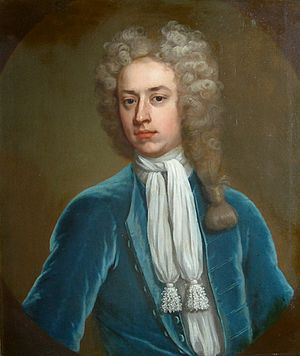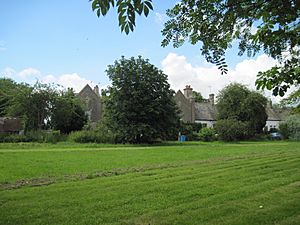John White (1699–1769) facts for kids
John White (born December 2, 1699 – died September 7, 1769) was an English politician. He lived at Wallingwells, Nottinghamshire. John White served in the House of Commons, which is like the main law-making body in Britain, for many years, from 1733 to 1768.
Early Life and Family
John White was the oldest son of Thomas White. His mother was Bridget Taylor. His family lived in Tuxford and Wallingwells. When his father passed away in 1732, John was 33 years old. He then took over the family's properties, including the large estate called Wallingwells in Nottinghamshire. People said he was quite handsome when he was young.
Political Career
John White was an important politician in his time. He became a Member of Parliament (MP) for East Retford. An MP is someone elected to represent people in the House of Commons. He first became an MP in 1733. This happened during a special election called a by-election. He took over the seat from his father.
He was re-elected without anyone running against him in 1734. John White was part of the Whig political group. He was also a trustee for the Georgia Society. This group helped set up the colony of Georgia in America. He later left the council of this society in 1736. But he stayed on as a trustee.
John White was a "Dissenter." This meant he did not agree with the official Church of England. He did not like the Georgia Society giving land to the Church of England. In 1736, he also spoke against giving money to fix a chapel. In 1739, he tried to change a law called the Test Act. This law made it hard for people who weren't part of the Church of England to hold public jobs.
He usually voted with the government. He was a strong supporter of Henry Pelham and the Duke of Newcastle. These two men were like prime ministers during the 1740s and 1750s. The Duke of Newcastle was a close friend to John and his father. Their friendship is shown in a book of letters from the Duke to White.
John White was re-elected again in 1754 and 1761. He didn't give many speeches during these years. He spoke about peace plans in 1762. He also spoke about a rule during a debate in 1765. He lost some of his influence in East Retford. So, he decided not to run for election in 1768.
Life at Wallingwells
When Parliament was not meeting, John White lived at his home, Wallingwells. He would travel to London in a fancy coach with six horses. Many servants and riders would go with him. His estate at Wallingwells was very grand. It had many deer in the park. The ponds were full of fish. When he was home, John loved to hunt. He was also very welcoming to his guests. He even built a special cave-like structure called a grotto near one of his ponds.
Later Years and Legacy
John White never married. He passed away on September 7, 1769. His younger brother, Taylor White, took over the family estates after him.



